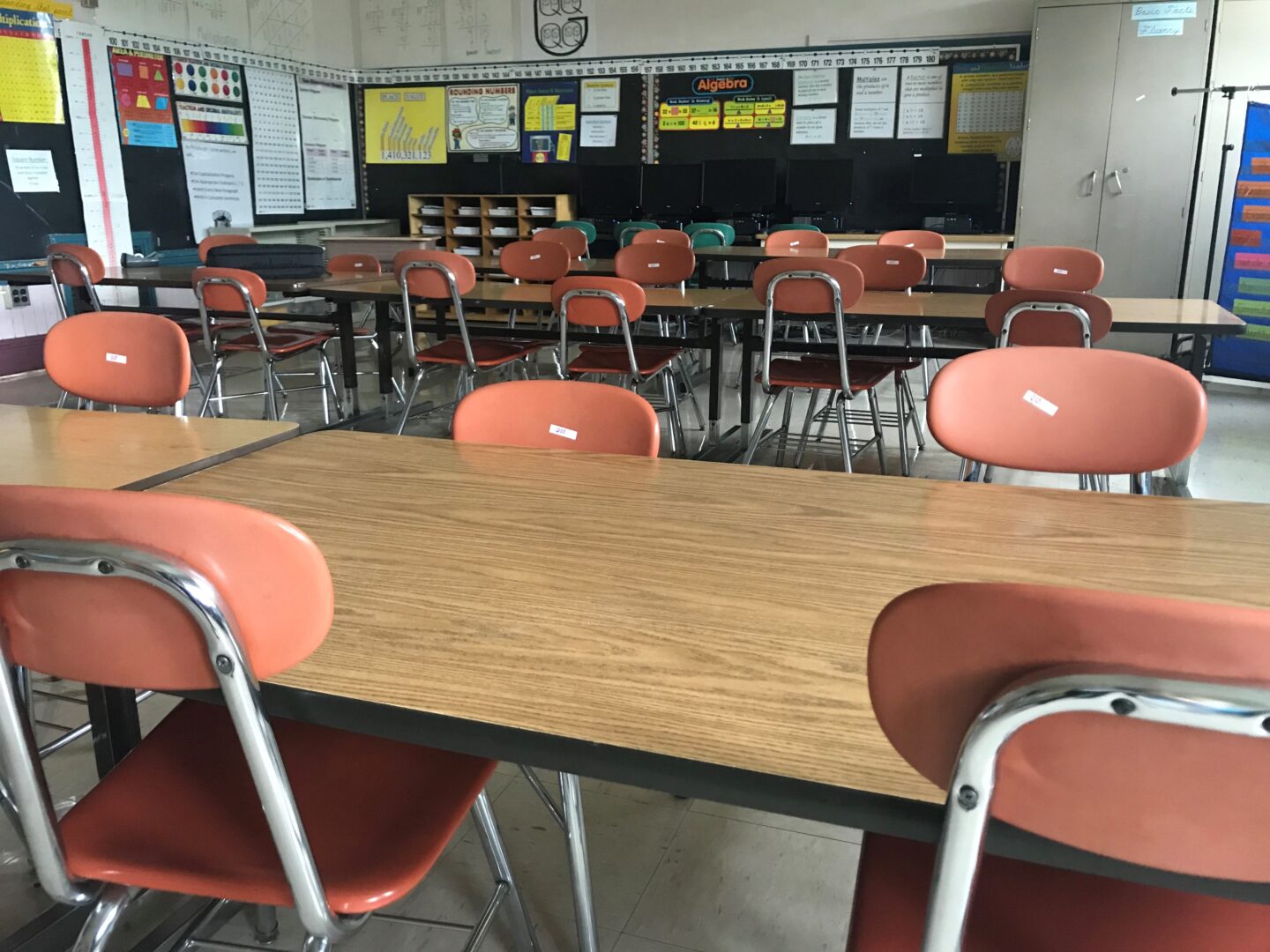
A classroom
Sarah Schneider / 90.5 WESA

A classroom
Sarah Schneider / 90.5 WESA

Sarah Schneider / 90.5 WESA
A classroom
Pennsylvania students of color are far less likely to have options to attend schools with advanced placement courses, experienced teachers, and low suspension rates than white students, according to a new report.
While the disparity is true in most states, Pennsylvania ranks in the bottom two in the nation for offering equal opportunity across racial and income groups. The state has the largest opportunity gap between Hispanic and white students and the second largest gaps between Black students and white students and between poor students and non-poor students.
The racial and income disparities are also generally larger than they were two years ago, when Philadelphia-based Research for Action first analyzed opportunity access using federal data from the Civil Rights Data Collection.
“Few states provide so much opportunity to their white students and yet so little to their Black and Hispanic students. In addition, few states provide so much less to their poor students compared to their non-poor students,” said senior research associate David Bamat during a Wednesday press briefing.
The organization launched an updated version of its Educational Opportunity Dashboard on Wednesday that analyzes data from the 2017-18 Civil Rights Data Collection. Research for Action’s dashboard scores states based on indicators of access to quality educators, access to positive school climate and access to college and career readiness curriculum.
The data is typically collected every two years though it was delayed because of the COVID-19 pandemic. Research for Actions says it expects to receive 2020-21 data in January 2023.
David Lapp, director of policy research with the organization, said the 2017-18 data sets the baseline of what we know about schools prior to the pandemic.
“We could expect there to be some changes based on the pandemic but what those are, I think, is difficult to predict. We’ve seen significant changes in test score outcomes from the pandemic that may or may not be related to what we see around access to educational opportunities,” he said.
Another significant finding from the report is that disparities in access to educational opportunities across the state are not only attributable to poverty.
Black and Hispanic students in the state are disproportionately enrolled in high-poverty schools that provide less access to educational opportunities. But the report found substantial inequality within mid and high-poverty schools between students of color and white students.
Lapp said he hopes that policymakers will use the report to inform financial priorities to close the gaps.
Lapp said the data was used by an expert witness during the school funding trial that wrapped up this summer. Six school districts and two advocacy groups sued the state in 2014 alleging the state inequitably funds schools.

Get insights into WITF’s newsroom and an invitation to join in the pursuit of trustworthy journalism.
The days of journalism’s one-way street of simply producing stories for the public have long been over. Now, it’s time to find better ways to interact with you and ensure we meet your high standards of what a credible media organization should be.